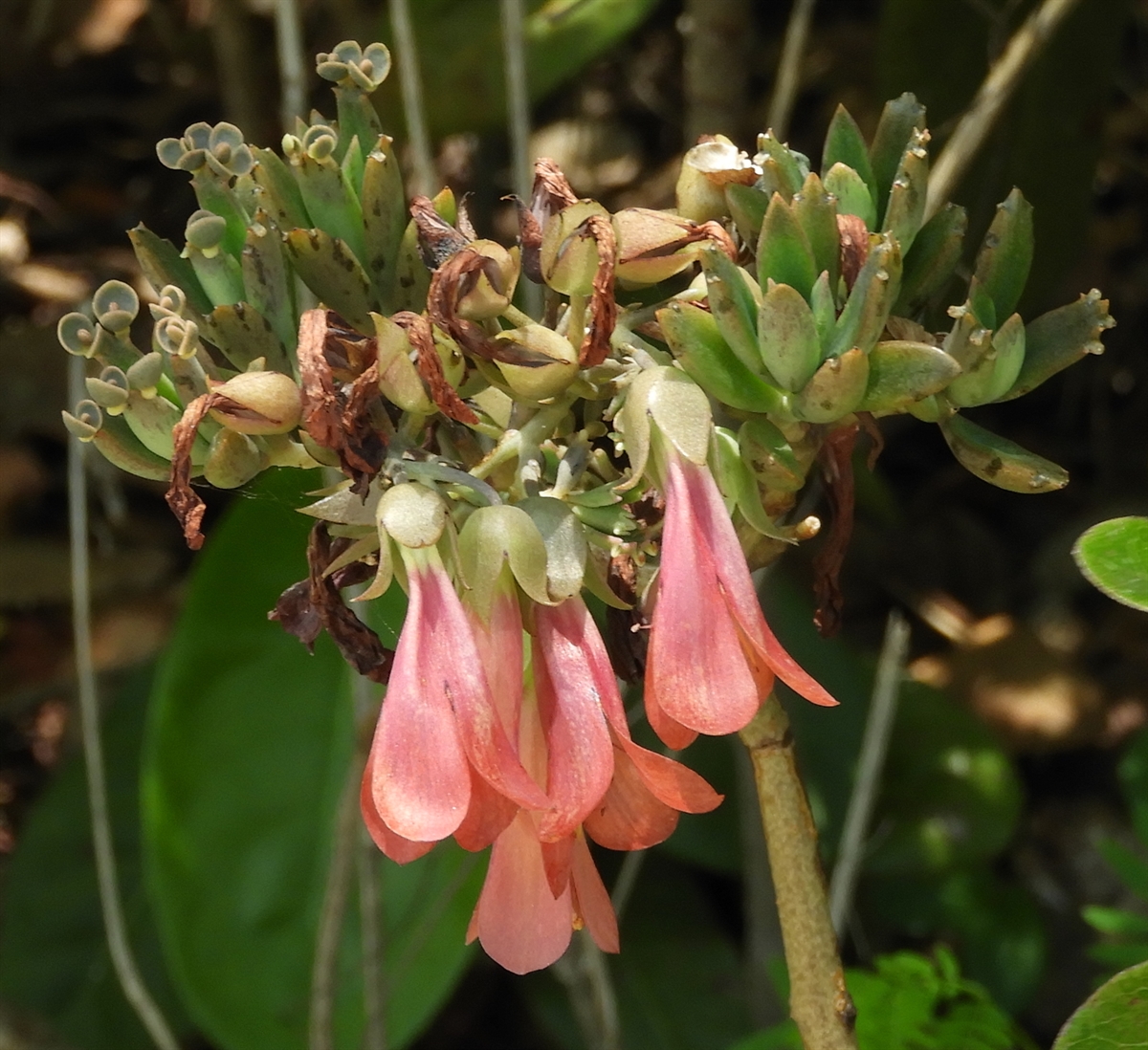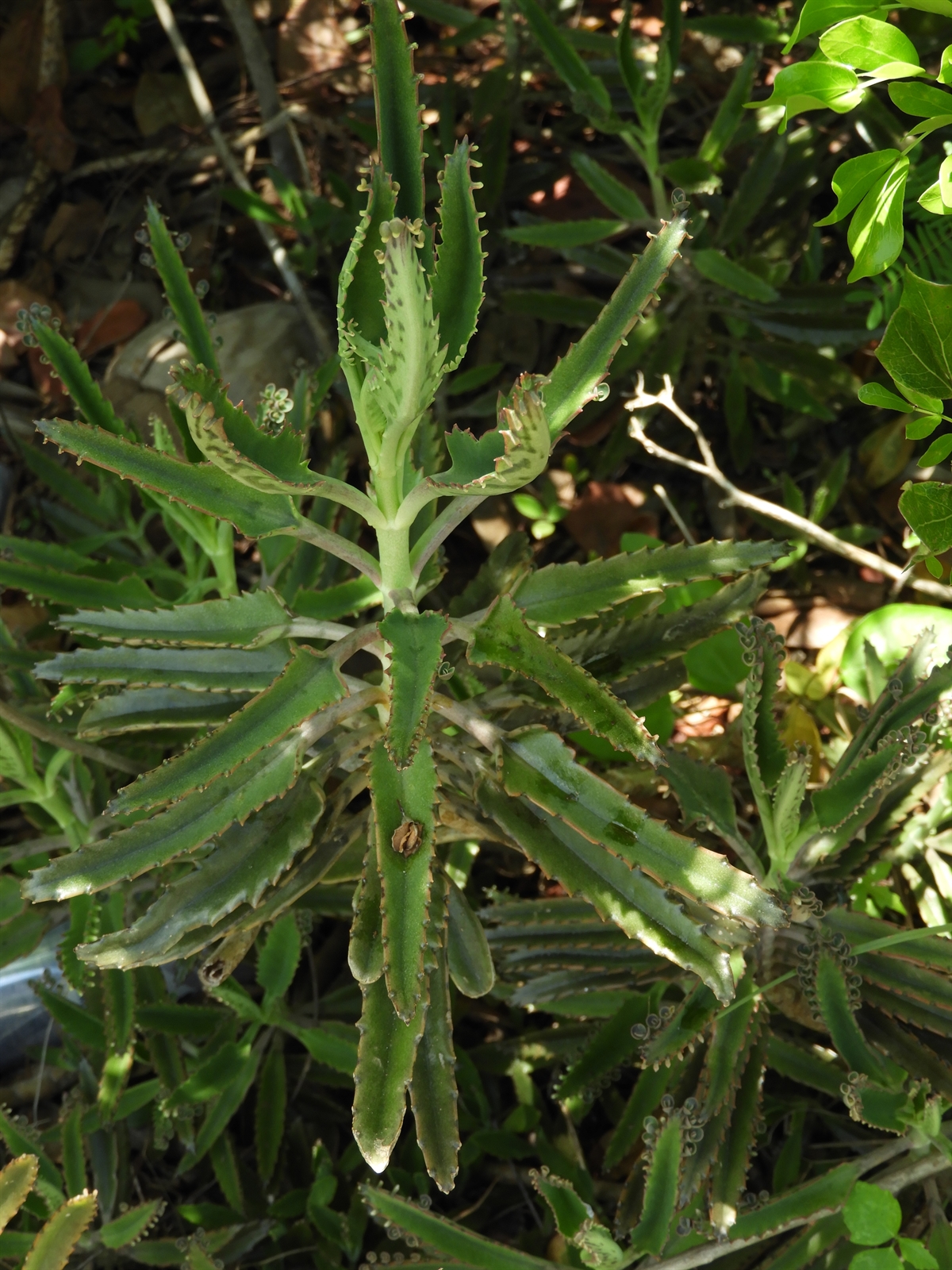Habit: Kalanchoe daigremontiana grows as a succulent herb to 1 m in height when flowering, vegetative growth to 50 cm in height with hollow stems. The leaves are arranged oppositely, oblong to lanceolate, to 15 cm in length with a notched margin that produces plantlets and an acute/acuminate apex. The leaf surface often with purple to red/brown spots.
The complete, perfect, actinomorphic flowers are pendulant and arranged in large paniculate cymes. The calyx has 4 fused sepals forming a tube. The corolla has 4 fused, purple to red/orange petals forming a tube that exceeds the calyx. There are 8 stamens fused to the base of the corolla. The ovary is superior with 4 locules and numerous seeds. The fruit is a capsule at maturity.
Habitat: Kalanchoe daigremontiana grows in Human Altered environments (yards, gardens, waste areas).
Distribution: Kalanchoe daigremontiana is NOT native to the Lucayan Archipelago. It is native to Madagascar. It does now occur in parts of the Caribbean as well as North, Central and South America and north Africa and Spain.
Medicinal/Cultural/Economic usage: Kalanchoe daigremontiana is not known to be used medicinally in the Lucayan Archipelago
It is used as a house plant and in succulent gardens.

